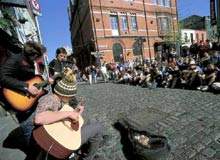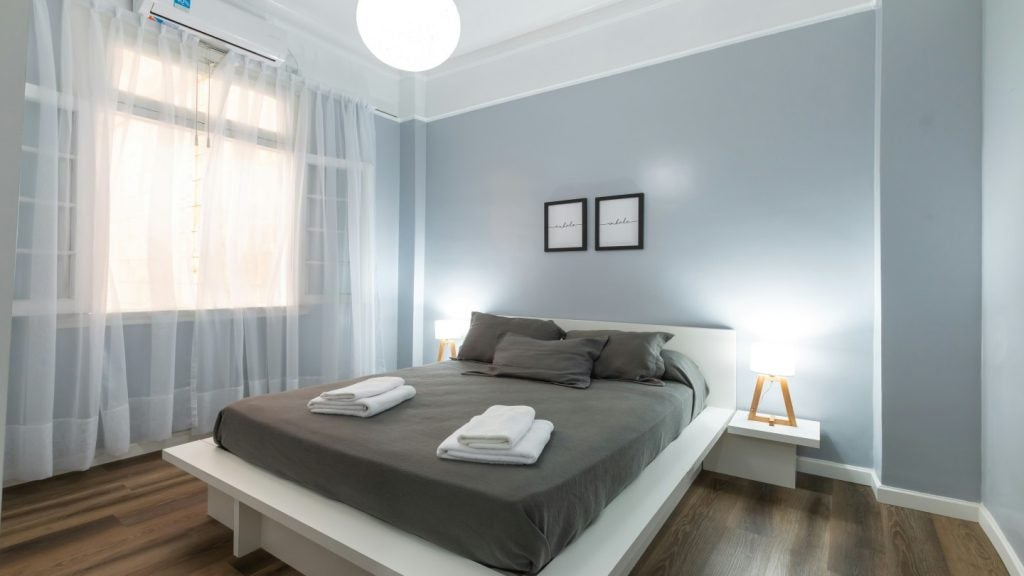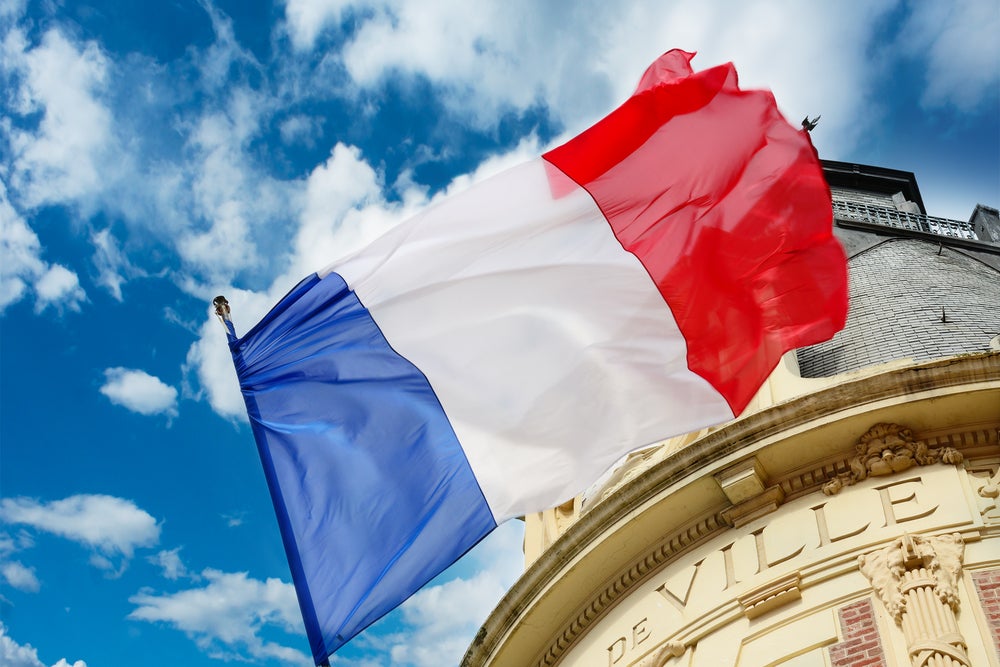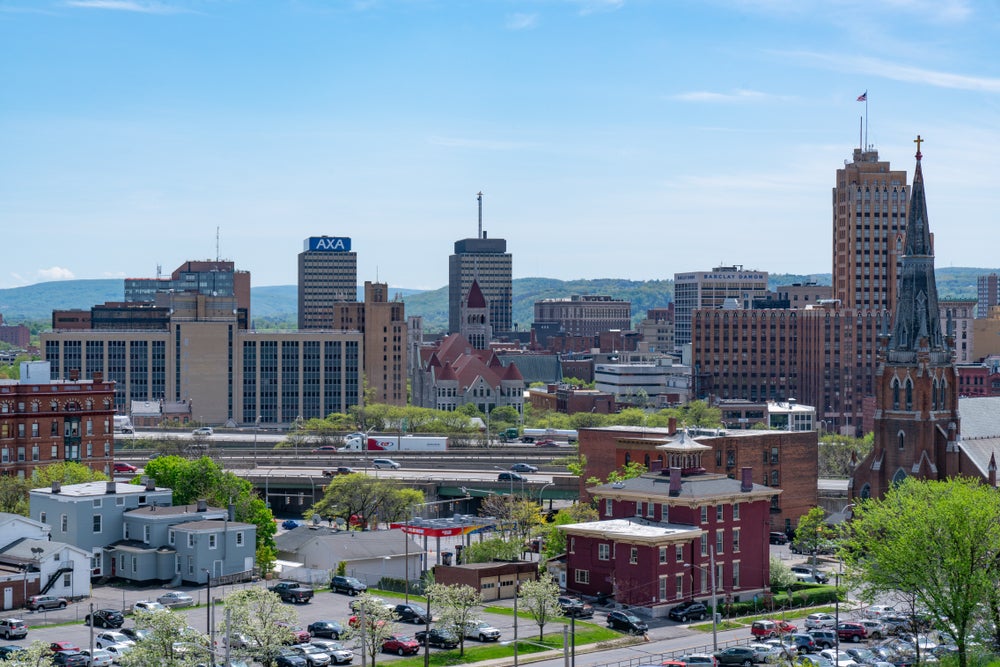
Dublin is the Republic of Ireland’s capital city, located on the shores of the Irish Sea, which separates the country from the UK.
In contrast with other key European capitals, Dublin is a small city, with a population of just over 1.1 million inhabitants, compared with London’s 17.4 million and Paris’s 11.2 million.
A city steeped in culture and folklore, with bustling streets, plenty of shops, bars and restaurants, and friendly local people, Dublin is a popular short-break destination and has been described as one of Europe’s most down-to-earth
capitals.
In recent years, the country has experienced a remarkable economic boom, yet in spite of this, hotel performance in Dublin has not witnessed any significant growth. Revenue per available room (revPAR) at the end of 2004 was €90, virtually
identical to that in 2000.
Year-to-May 2005 performance was down, with revPAR down 2% compared with the same period the previous year. However, there is real optimism that significant investment in the city over the next few years will provide a welcome boost for
hoteliers.
See Also:
WELCOMING NEW VISITORS
How well do you really know your competitors?
Access the most comprehensive Company Profiles on the market, powered by GlobalData. Save hours of research. Gain competitive edge.

Thank you!
Your download email will arrive shortly
Not ready to buy yet? Download a free sample
We are confident about the unique quality of our Company Profiles. However, we want you to make the most beneficial decision for your business, so we offer a free sample that you can download by submitting the below form
By GlobalDataOverseas visitor arrivals to Ireland continue to increase. In 2004, Board Failte estimated that the country welcomed 6.4 million overseas visitors, an 8.5% increase from 1999, when it was 5.9 million.
Nearly 58% of overseas arrivals (3.6 million people) visit Dublin, and the city’s share of overseas visitor arrivals increased from 54% in 2000 to 58% in 2004.
This rise in overseas visitor arrivals is reflected in the levels of passenger traffic at Dublin Airport, which have increased by 34% since 2000, with 18.5 million people expected to pass through the airport terminal in 2005.
During 2004, the airport opened up 35 new routes and now serves 150 destinations – both charter and scheduled. Low-cost airlines such as Ryanair and Aer Lingus dominate the market, while new European airlines such as Transavia, Hapag Lloyd
Express and Germanwings all debuted in 2004.
To cope with future demand, the Irish Government has granted permission to build a second terminal. By the time the terminal is completed in 2009, the airport will be able to handle up to 32 million passengers per year.
Initial talks are also underway regarding the construction of a third terminal and an additional runway. Should permission be granted, these would be operational by 2014.
Infrastructure in and around the city is also expected to get a boost, with plans in the pipeline for the construction of a new outer ring road motorway to ease congestion in the outlying parts of the Greater Dublin area. This should help take
pressure off the M50, one of the main motorways linking Dublin and the rest of Ireland.
The construction of a Port Tunnel linking the port with the M1 motorway, due for completion in 2006, will keep heavy goods vehicles out of the city and ease traffic congestion.
The Irish Government is aware that, having attracted significant inward investment to the country, it must deliver the infrastructure to support business. Other examples include extending the railway to the airport, as Dublin is the only EU capital
without a rail link from its air terminal to the city.
CONFERENCE CALL
Initial talks regarding the construction of a National Conference Centre in Dublin began back in 2000. Since then progress has been slow. In May 2005 the minister for arts, sport and tourism finally requested submission of tenders.
Dublin is currently the only capital city in Europe without this type of venue and, according to the Dublin Chamber of Commerce, each year the city is without this facility €50m in economic activity is lost.
Once opened, the centre will have the capacity for 30,000 delegates per year, in addition to the 120,000 visitors who already come to the city for conferences. The expected influx of corporate business in Dublin created by the new conference centre
should help drive occupancy levels upward.
As a conference and incentive destination Dublin is an attractive option with excellent airlinks to North America and Europe. Also, compared with other European destinations, average room rates are relatively low.
SPORT DRAWING THE CROWDS
Ireland has long been known for its wealth of golf courses, and the International Sports Tourism Initiative, coordinated by Board Failte, has helped bring many prestigious events to the country.
A number of European Tour golfing events are held across the country, and the American Express World Gold Championships were held in Mount Juliet in 2002 and 2004.
In September 2006, the Ryder Cup will make its debut in Ireland at the K-Club in County Kildare, approximately 20 miles from Dublin city centre. The event is estimated to attract 40,000 people per day over the three days, and will further raise the
city’s profile on the international stage.
Lansdowne Road, the historical home of Irish rugby, is currently being redeveloped and will undoubtedly add to the city’s sporting pedigree when completed in 2008. The new and improved facility will have a capacity of 50,000 people and will be
able attract major national and international fixtures.
While the stadium is being renovated, permission has been granted for rugby games to be played on a temporary basis at the nation’s Gaelic football stadium, Croke Park, where traditionally only Gaelic football has been permitted.
A BOOST FOR REVPAR
Since the late 1990s, the Dublin hotel market has undergone a rapid transformation. Once dominated by domestic hotel chains Doyle and Jurys Hotels, the two companies combined in 1999 to form the Jurys Doyle Hotel Group.
Since then a number of international brands have opened in the city, including Westin, Four Seasons and Days Inn. Brands such as Marriott and Radisson have been attracted to more provincial locations.
While overall revPAR in the city remains virtually unchanged from 2000 at €90, there has been a marked difference in occupancy and average room rate performance.
The addition of new supply to the market has caused occupancy to fall from 79% to 72%. However, this has been offset by a €9 rise in average room rates to €124.
Given the luxurious quality of the new supply, the increase in average room rates is not surprising. What is more concerning is that, if the impact of new supply is discounted, average room rates have fallen €3 during this period.
The poorest performance for the hotel market was in 2002 when occupancy tumbled to 69% and revPAR fell to €85. A number of factors contributed to this poor performance, including the decline of international tourism post-9/11, the launch
of the euro and associated transparency of pricing across Europe.
Since then performance has continued to improve, albeit slowly, with revPAR improving year-on-year. However, the first five months of 2005 were less encouraging, with revPAR down 1.7% to €83. This was the result of declines in both occupancy and average room rates.
There has been encouraging growth outside the city, particularly around the airport area, with revPAR up 0.4% thanks to increasing average room rates, which are some 50% lower than in the city centre.
NEW SUPPLY DELIVERS A BOOST
Despite limited hotel performance growth, operators have not been deterred from entering the market. Both chain properties and independents are adding new supply to the city.
In addition to new supply, there are also a number of renovation projects underway. The Shelbourne Hotel on Stephens Green, just south of the city centre, has closed its doors for 18 months for a major overhaul, expected to cost €18m. Further
north of the city, along the coast in Malahide, the Grand Hotel is currently awaiting planning permission to add 64 rooms to its existing 150.
With higher investment and an increase in tourist arrivals, the future looks bright for the hotel industry in Dublin. In addition, the recent go-ahead to build a National Conference Centre in Dublin will help the city attract major international
conferences and events, which should provide a welcome boost for hotel performance.







